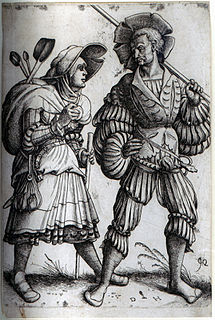
Etching is traditionally the process of using strong acid or mordant to cut into the unprotected parts of a metal surface to create a design in intaglio (incised) in the metal. In modern manufacturing, other chemicals may be used on other types of material. As a method of printmaking, it is, along with engraving, the most important technique for old master prints, and remains in wide use today. In a number of modern variants such as microfabrication etching and photochemical milling it is a crucial technique in much modern technology, including circuit boards.

Printmaking is the process of creating artworks by printing, normally on paper. Printmaking normally covers only the process of creating prints that have an element of originality, rather than just being a photographic reproduction of a painting. Except in the case of monotyping, the process is capable of producing multiples of the same piece, which is called a print. Each print produced is considered an "original" work of art, and is correctly referred to as an "impression", not a "copy". Often impressions vary considerably, whether intentionally or not. The images on most prints are created for that purpose, perhaps with a preparatory study such as a drawing. A print that copies another work of art, especially a painting, is known as a "reproductive print".
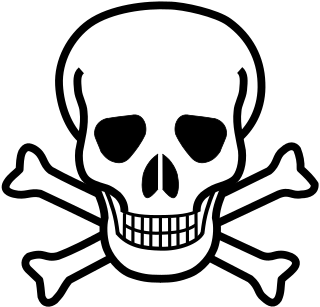
Toxicity is the degree to which a chemical substance or a particular mixture of substances can damage an organism. Toxicity can refer to the effect on a whole organism, such as an animal, bacterium, or plant, as well as the effect on a substructure of the organism, such as a cell (cytotoxicity) or an organ such as the liver (hepatotoxicity). By extension, the word may be metaphorically used to describe toxic effects on larger and more complex groups, such as the family unit or society at large. Sometimes the word is more or less synonymous with poisoning in everyday usage.
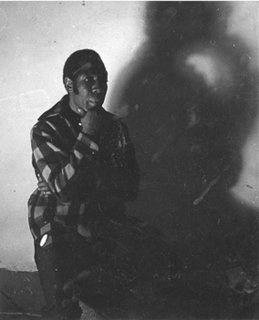
Robert Hamilton Blackburn was an African-American artist, teacher, and master printmaker.

Carborundum mezzotint is a printmaking technique in which the image is created by adding light passages to a dark field. It is a relatively new process invented in the US during the 1930s by Hugh Mesibov, Michael J. Gallagher, and Dox Thrash, an artist working in Philadelphia with the WPA). "Carborundum Collagraph" collagraph is a different printmaking technique, invented in 1952 by Henri Goetz, an American abstract artist living in Paris. The carborundum mezzotint uses the grits to create pits below the surface of the metal that then hold ink, like traditional mezzotint. The carborundum collagraph creates the image above the surface of the matrix, which does not have to be metal. In one method, the grits are mixed into a paste using an acrylic base that is painted onto the matrix, creating the image much like painting. Once dried, this holds the ink; the wiping and printing are done the same as etching. The techniques described following and below are alternatives to the paste mixture technique, yet all are creating the image above the surface of the matrix. Carbordundum collagraph allows artists to work on a large scale. Normally, cardboard or wood plates are coated in a layer of carborundum or screen, and the lights are created by filling in the texture with screen filler or glue. Carborundum prints may be printed as intaglio plates.
Oxford Printmakers Co-operative is an open access fine art printmaking workshop in Oxford, England, located in the Christadelphian Hall at the end of Tyndale Road off the Cowley Road near The Plain. It was set up in 1976 to help and enable artists in the Oxford area to provide them with a platform and a place where they could make their own artwork and prints.

Krishna Reddy was an Indian printmaker, sculptor, and teacher. He was considered a master intaglio printer and known for viscosity printing.

Vitreography is a fine art printmaking technique that uses a 3⁄8-inch-thick (9.5 mm) float glass matrix instead of the traditional matrices of metal, wood or stone. A print created using the technique is called a vitreograph. Unlike a monotype, in which ink is painted onto a smooth glass plate and transferred to paper to produce a unique work, the vitreograph technique involves fixing the imagery in, or on, the glass plate. This allows the production of an edition of prints.
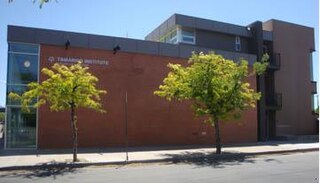
Tamarind Institute is a lithography workshop created in 1970 as a division of the University of New Mexico in Albuquerque, NM, United States. It began as Tamarind Lithography Workshop, a California non-profit corporation founded by June Wayne on Tamarind Avenue in Los Angeles in 1960. Both the current Institute and the original Lithography Workshop are referred to informally as "Tamarind."
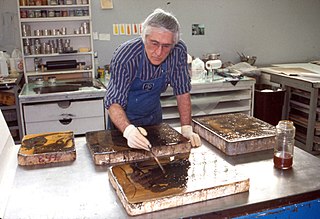
Kenneth E. Tyler, AO is a master printer, publisher, arts educator and a prominent figure in the American post-war revival of fine art, limited edition printmaking. Tyler established leading print workshops and publishing houses on both West and East coasts of the United States and made several innovations in printmaking technology. His technical expertise and willingness to experiment on a bold scale drew many famous and influential artists to his workshops, among them Frank Stella, Helen Frankenthaler, Roy Lichtenstein, David Hockney, Robert Rauschenberg, Anthony Caro and Jasper Johns. Ken Tyler remains active as an educator and promoter of fine art printmaking, and mentor of a younger generation of printers through his various training and collecting institutions in Singapore, Japan, Australia and the US. The largest collection of prints produced at Tyler's successive workshops is currently held by the National Gallery of Australia.
Carol Wax is an American artist, author and teacher whom the New York Times called "a virtuoso printmaker and art historian" for her work in mezzotint and her writings on the history and technique of that medium.
David Jay Reed is an artist who has also been an actor, photographer, graphic designer, lecturer, and artist of various mediums.
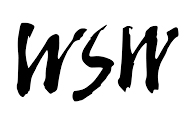
Women's Studio Workshop (WSW) is a nonprofit visual arts studio and private press offering residencies and educational workshops, located in Rosendale, New York.
Articulate Ink is a printmaking collective formed in January 2010 in Regina, Saskatchewan, Canada. It was founded by four Fine Arts graduates from the University of Regina.
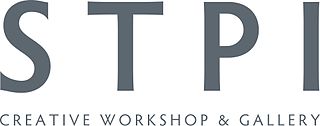
STPI - Creative Workshop & Gallery, Singapore is a creative workshop and contemporary art gallery based in Singapore that specialises in artistic experimentation in the medium of print and paper. To date, STPI has collaborated with over 90 artists from all over the world.
Clare Romano (1922–2017) was an internationally known American printmaker and painter with works in the Metropolitan Museum of Art, the Museum of Modern Art, the Smithsonian American Art Museum, the Cooper Hewitt, Smithsonian Design Museum and other major collections. As an advocate, innovator, and educator in the field of printmaking, Romano has co-authored in collaboration with her husband, John Ross, The Complete Printmaker (1972), The Complete Collagraph (1980), and several other printmaking manuals that have become standard texts for universities. They founded their High Tide Press for artists books in 1991.
Jacki Parry RSA is an Australian born artist, printmaker, papermaker, former lecturer at the Glasgow School of Art and a founding member of the Glasgow Print Studio and the Paper Workshop, Glasgow.
Elspeth Lamb, RSA is a Scottish artist who mainly specialises in lithographic printmaking, as well as lecturing and publishing on the subject. She is known for using lithographic limestone to produce lithographic prints: a process which is still used extensively in the USA as well as Edinburgh Printmakers Workshop and Peacock Visual Arts, Aberdeen. She has had various residencies and taught all over the world, though she is based in Scotland. Her style uses bold colours and includes book arts, print methods and papermaking. She is an elected member of the Royal Scottish Academy. She has currently left teaching and works freelance, running her own print studio.
The Graphic Arts Workshop (GAW) of San Francisco, a cooperative print studio, is located in the Dogpatch neighborhood. The studio has approximately 40 members working in fine art printmaking techniques such as lithography, intaglio, serigraphs, and relief printing. GAW offers affordable printmaking studio access and printmaking classes.

In printmaking, surface tone, or surface-tone, is produced by deliberately or accidentally not wiping all the ink off the surface of the printing plate, so that parts of the image have a light tone from the film of ink left. Tone in printmaking meaning areas of continuous colour, as opposed to the linear marks made by an engraved or drawn line. The technique can be used with all the intaglio printmaking techniques, of which the most important are engraving, etching, drypoint, mezzotint and aquatint. It requires individual attention on the press before each impression is printed, and is mostly used by artists who print their own plates, such as Rembrandt, "the first master of this art", who made great use of it.












